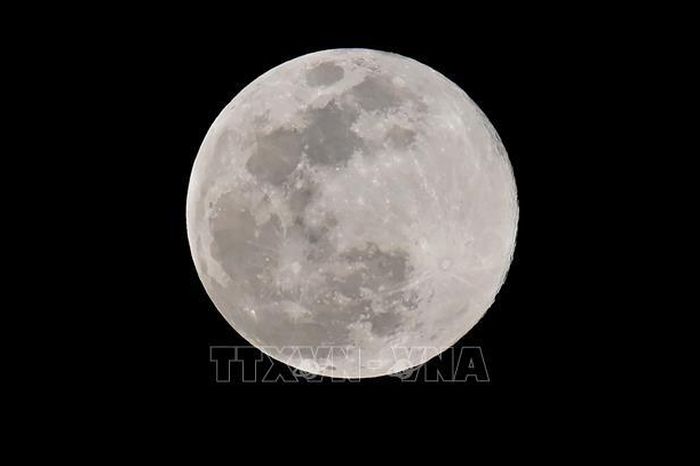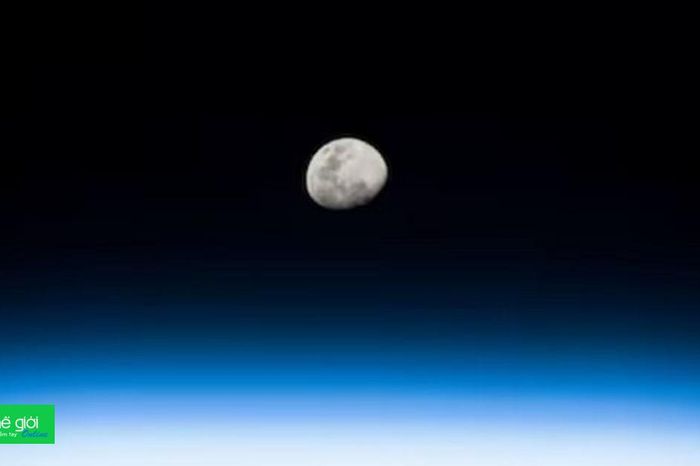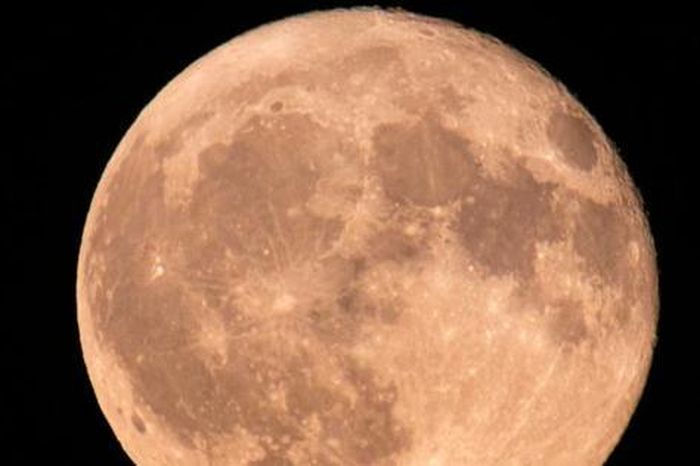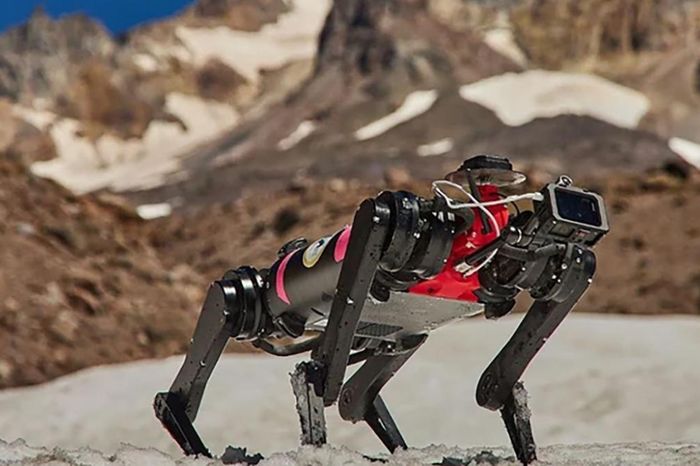NASA shares a rare photograph of a 'rainbow' surrounding the Moon
Perhaps most people at least once in their life have seen the phenomenon of rainbows coming out after the rain, but the sight of rainbows surrounding the Moon right at night is most likely never thought of. not to mention admiring.
However, this amazing natural phenomenon happened on a full moon night in the city of Turin, Italy in 2014. Before that, the phenomenon of rainbow appearing around the Moon right at night had never happened.
This impressive moment of the Moon was recorded by photographer Giorgia Hofer and recently NASA shared it for everyone to admire.

In the picture above, the Moon is surrounded by a rainbow-like band. But that band of color is actually a corona (halo or aura) created by quantum mechanical diffraction of light around water droplets of approximately equal size in a layered and transparent cloud. Diffraction creates different colors because each wavelength has a different color.
Halos rarely appear around the Moon, in the Sun this is more common. However, the halo around the Sun is more difficult to see, sometimes even unable to see their actual colors. But with the halo appearing around the Moon, we can clearly see their colors with the naked eye.
- Interesting facts about Saturn
- Top 10 interesting facts about the Moon you may not know
You should read it
- A series of amazing natural phenomena that you cannot see every day, or never in your life
- Configure Rainbow Six Siege on the computer
- Rainbow Six Quarantine will be released before spring 2020
- Tom Clancy's configuration Rainbow Six Quarantine on the computer
- White rainbow, glowing sky, thunder storm and the most bizarre weather phenomena in the past year!
- How to drop new rainbow icons on Facebook
- Why didn't NASA intend to return to the Moon?
- Explore the rainbow-colored village of fever in Indonesia
May be interested
- NASA took on the task of establishing standard time on the Moon
 on april 2, the us government directed the us aeronautics and space administration (nasa) to establish unified time standards for the moon and other celestial bodies, in the context of countries and private companies. everyone is intensifying the race to explore the universe.
on april 2, the us government directed the us aeronautics and space administration (nasa) to establish unified time standards for the moon and other celestial bodies, in the context of countries and private companies. everyone is intensifying the race to explore the universe. - 15 beautiful rainbow moments appear throughout the Earth
 the multicolored rainbow bands appear to make the beautiful scenery become more and more attractive in everyone's eyes.
the multicolored rainbow bands appear to make the beautiful scenery become more and more attractive in everyone's eyes. - NASA contemplates turning a moon crater into a giant, powerful telescope
 the far side of the moon would be a great place to stare out into the cosmos.
the far side of the moon would be a great place to stare out into the cosmos. - NASA sets standard time for the Moon
 according to reuters, the white house on april 2 directed the us aeronautics and space administration (nasa) to establish a unified standard for standard time (hour) for the moon and other celestial bodies.
according to reuters, the white house on april 2 directed the us aeronautics and space administration (nasa) to establish a unified standard for standard time (hour) for the moon and other celestial bodies. - Return to the historic moment when NASA spacecraft landed on the Moon through a re-created film from over 14,000 photos
 a vivid, 1-0-2 film, meticulously and meticulously recreating the photographer's moment of breathtaking nasa spacecraft, the film maker christian stangl surprised many.
a vivid, 1-0-2 film, meticulously and meticulously recreating the photographer's moment of breathtaking nasa spacecraft, the film maker christian stangl surprised many. - Why does NASA want to set a time zone for the Moon?
 the us government tasked the space agency nasa with establishing a standard time zone for the moon, which will be called coordinated lunar time (clt).
the us government tasked the space agency nasa with establishing a standard time zone for the moon, which will be called coordinated lunar time (clt). - The extremely rare astronomical phenomenon 'Black Moon' will appear tonight
 the sky today (friday, september 30) is an unusual lunar event in the western hemisphere: the second new moon appears in the same month - it is called black moon.
the sky today (friday, september 30) is an unusual lunar event in the western hemisphere: the second new moon appears in the same month - it is called black moon. - Why did the Soviets never set foot on the Moon?
 the dream of a soviet astronaut walking on the moon faded away on a launch pad in kazakhstan in the summer of 1969.
the dream of a soviet astronaut walking on the moon faded away on a launch pad in kazakhstan in the summer of 1969. - Over 12,000 people applied to fly to the moon and Mars as NASA Artemis astronauts
 as it turns out, a whole lot of people would like to visit the moon (and mars). nasa has received over 12,000 applications for its next class of astronauts, it announced this week.
as it turns out, a whole lot of people would like to visit the moon (and mars). nasa has received over 12,000 applications for its next class of astronauts, it announced this week. - The US tested robots operating on the Moon
 scientists are conducting tests that will allow the four-legged robot spirit to move on rough terrain, simulating the harsh conditions of the moon and mars. this project is led by the university of southern california (usc), with funding from nasa.
scientists are conducting tests that will allow the four-legged robot spirit to move on rough terrain, simulating the harsh conditions of the moon and mars. this project is led by the university of southern california (usc), with funding from nasa.










 These tiny creatures crossed the 384,400km route from the earth and are landing on the moon
These tiny creatures crossed the 384,400km route from the earth and are landing on the moon This is why Elon Musk wants to conduct a 'nuclear attack' on Mars
This is why Elon Musk wants to conduct a 'nuclear attack' on Mars Recycle space waste, impossible thought possible!
Recycle space waste, impossible thought possible! NASA's space telescope finds three new planets with rare features
NASA's space telescope finds three new planets with rare features The newly discovered black hole contains anomalous characteristics, challenging most astronomical theories today
The newly discovered black hole contains anomalous characteristics, challenging most astronomical theories today Admire the design of the most award winning NASA space design competition: Harmony, full of comfort, and safety
Admire the design of the most award winning NASA space design competition: Harmony, full of comfort, and safety